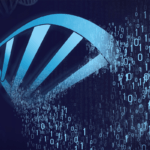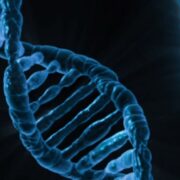Amino acids are the building blocks of proteins, and there are around 20 types. Ten are essential as they must be obtained from the diet.
Amino Acids: The Cornerstones of Proteins
Amino acids, integral in forensic science and biology, are the fundamental building blocks for constructing proteins. These water-soluble organic compounds are essential for life, and their unique properties and characteristics are crucial to various scientific fields.
The Role of Amino Acids in Biology:
Amino acids are the fundamental units that constitute proteins, which are the workhorses of biological systems. Proteins perform various critical functions in living organisms, including enzyme catalysis, structural support, and immune responses. There are approximately 20 standard amino acids, each with unique properties and roles in determining protein structure and function.
Structural Basis of Proteins:
Proteins are biological macromolecules that carry out many functions in the cell, including catalyzing chemical reactions, transporting molecules, and providing structural support. The structural diversity and functional versatility of proteins are largely attributable to the unique properties of amino acids.
Amino acids consist of a central carbon atom (the alpha carbon) bonded to four distinct chemical groups: an amino group (NH2), a carboxyl group (COOH), a hydrogen atom (H), and an R group (also known as a side chain). It is the R group that distinguishes one amino acid from another. There are approximately 20 commonly occurring amino acids, each with a different R group.

Essential Amino Acids:
Among the 20 standard amino acids, 10 are classified as essential amino acids. These are vital because the human body cannot synthesize them independently, and must be obtained through dietary sources. The essential amino acids include phenylalanine, valine, threonine, tryptophan, methionine, leucine, isoleucine, lysine, histidine, and arginine. These amino acids are integral to various biological processes, such as protein synthesis and neurotransmitter production.
Biological Functions of Amino Acids:
Amino acids have diverse biological roles beyond just protein synthesis. They are essential for various physiological processes, including:
- Energy Production: Some amino acids can be converted into glucose or used as an energy source.
- Enzyme Catalysis: Amino acids serve as co-factors for enzymes, facilitating chemical reactions.
- Immune Function: Amino acids play a role in immune response and antibody production.
- Hormone Regulation: Certain amino acids are precursors for hormones like serotonin and dopamine.
- Muscle Development: Amino acids, especially branched-chain amino acids, are critical for muscle growth and repair.
- Neurotransmitter Synthesis: Amino acids like glutamate and GABA act as neurotransmitters in the nervous system.
Forensic Applications:
Amino acids play a significant role in forensic science, particularly in analyzing biological evidence. Forensic experts often examine bodily fluids, tissues, and hair to gather valuable information about a crime scene or identify individuals. Amino acids contribute to this analysis through techniques like DNA analysis and protein profiling.
- DNA Analysis: Amino acids are essential in DNA analysis, a core forensic science technique. DNA, an individual’s genetic blueprint, comprises nucleotides containing phosphate groups, sugar molecules, and nitrogenous bases. The genetic code for assembling amino acids into proteins is embedded in the DNA structure. Through DNA analysis, forensic scientists can establish genetic profiles, allowing them to link suspects to crime scenes or determine familial relationships.
- Protein Profiling: Protein profiling is another forensic technique that relies on proteins’ unique sequences and structures, which are determined by the composition of amino acids. By examining amino acid compositions in proteins, forensic experts can gain insights into the origin of biological samples, helping to identify victims or perpetrators.
The Significance of Amino Acids:
Amino acids are crucial for the construction and functionality of proteins. Peptide bonds link them together to form polypeptide chains. These chains fold into complex three-dimensional structures, ultimately determining a protein’s function. Proteins, including enzymes, antibodies, and structural proteins, are all composed of these amino acid chains.
In Summary:
Amino acids are organic compounds that are the fundamental building blocks for proteins. Of the approximately 20 standard amino acids, ten are considered essential as the human body cannot produce them and must be obtained through the diet. In forensic science, amino acids are integral to DNA analysis and protein profiling, aiding in crime investigations and identifying individuals.





